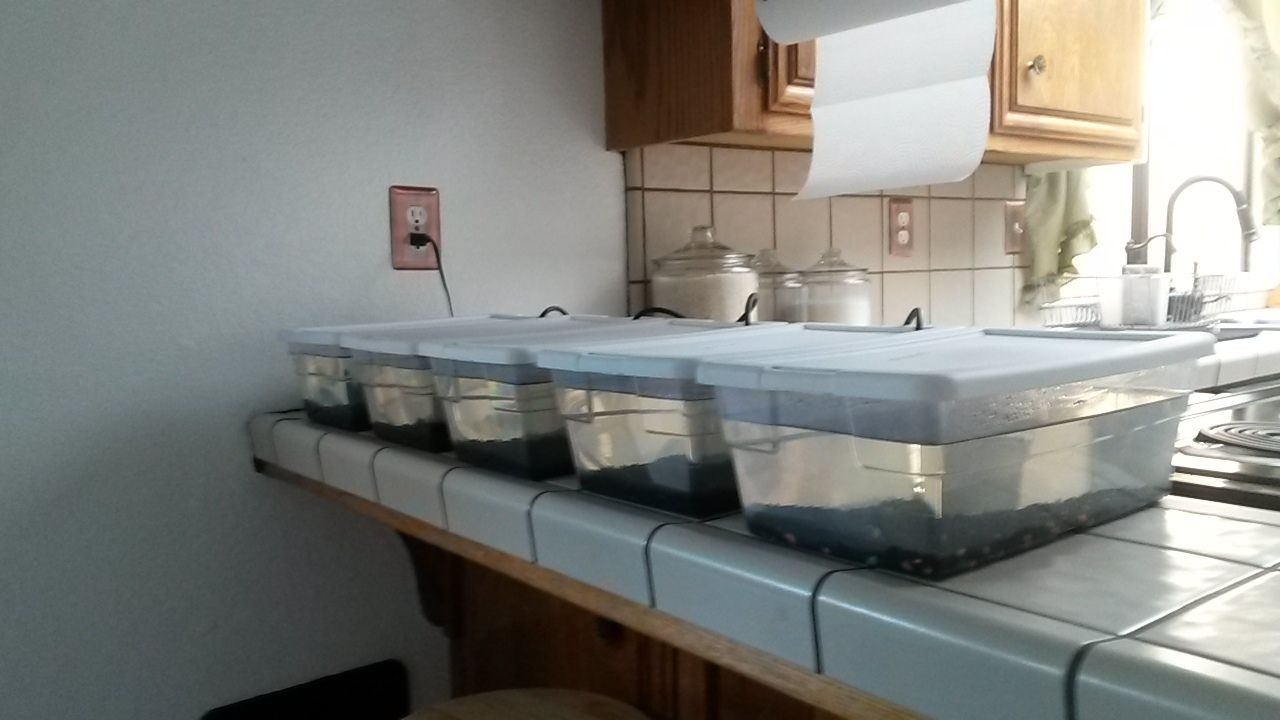I would like to suggest an alternate version of the Transfer Method (Transfer Method II if I may) to eradicate Cryptocaryon irritans from new arrivals that I've had success with, in which sterilization and ammonia levels aren't a concern nor is there a large amount of water wasted. In this method instead of two buckets or aquariums you simply use 5 permanent small quarantine aquariums where you transfer every 3 days. You then start over and reuse them without contamination concerns after 2 and half months or 75 days:
Start 5 small quarantine aquariums with a small amount of inert gravel using cycled water from an established Cryptocaryon free system and then wait a week to cycle or simply add freshly mixed water and wait a month to cycle. One air pump can be used with valves to run all five.
- Day 1 - Place your fish in the first quarantine aquarium.
- Day 4 - After 72 hours transfer your fish from the first to the second quarantine aquarium with a net or other small clear drain container to transfer as little water as possible with the fish. This is easier to do at at night when the fish are asleep and sluggish.
- Day 7 - Repeat transfer to the third quarantine aquarium.
- Day 10 - Repeat transfer to the fourth quarantine aquarium.
- Day 13 - Repeat transfer to the fifth quarantine aquarium. Optionally treat for 24 hours with Prazipro for worms on the last day.
- Day 16 - Transfer to larger quarantine system (for further observation and treatment of other diseases) or optionally transfer directly to your main display aquarium.
- Day 76 - After 75 days you can safely start over again with new fish using the same water.
- There is a very small chance of transfer of a Tomont or Protomont in this process (with the water and on the fish) yet not to worry that's why you have a series of transfers over time. The whole idea is to leave the parasites behind and thus just in case transfer as little water as possible on each transfer to avoid any possible free swimming Theront, however, you don't need to expose your fish to air if you don't want to. You can simply transfer them over in a clear container with just enough water for them to be submersed under. At each transfer transmission become less likely by the fourth transfer it's should be gone. I added a fifth transfer just to make sure.
- You can optionally treat the water with Seachem’s ParaGuard or similar to prevent a wide rage of diseases during the whole process of 15 days. It has a mix of aldehydes, malachite green, and other proprietary fish protective polymers to fight against ectoparasites including Cryptocaryon irritans, external fungal, bacterial and viral lesions including fin rot, this according the manufacturer.
- Optionally treat for 24 hours with Prazipro for worms on the last day.
- The aquarium size used depends on how big and how many fish you have.
- Here is one example using one gallon clear plastic boxes ($0.98) at HomeDepot. I used a soldering iron to melt a small hole for airline tubing and I've had very little salt creep with these. I use these with a maximum of two small fish at a time.
See Transfer Method
http://atj.net.au/marineaquaria/3daytransfer.html
http://www.reef2reef.com/threads/tank-transfer-method.192655/

